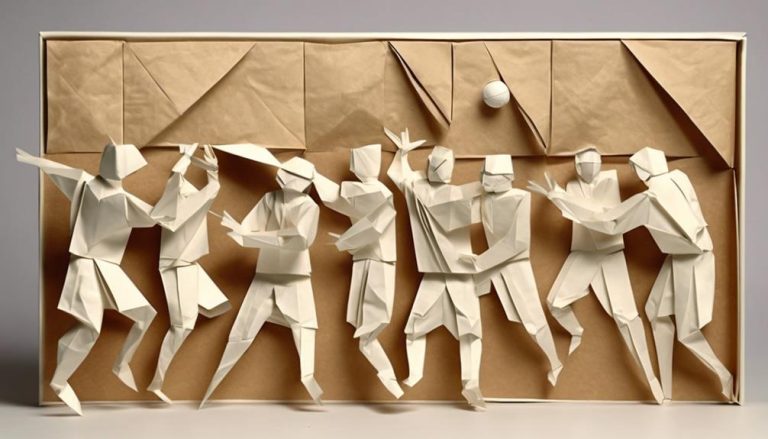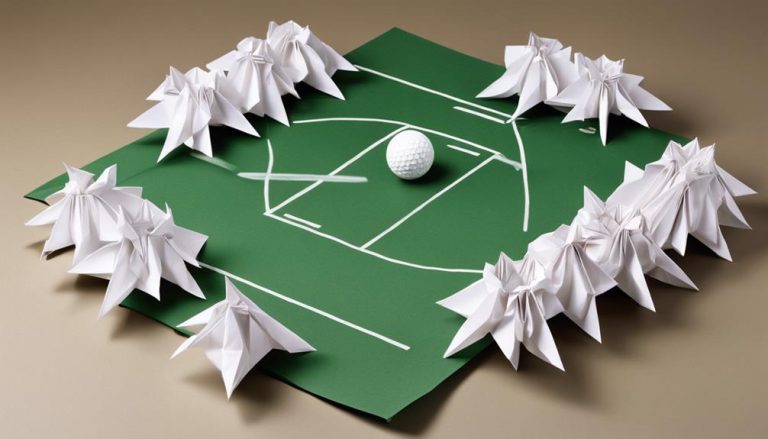General Rules of Pehlwani
When stepping into the domain of Pehlwani, you must adhere to the general rules that govern this ancient form of wrestling. From understanding the traditional techniques to moving through the attire and equipment requirements, the world of Pehlwani is rich with customs and regulations that shape the sport. As you explore the intricacies of the rules and guidelines, you will uncover a fascinating tapestry of history and tradition that sets Pehlwani apart from other wrestling disciplines.
History of Pehlwani
The history of Pehlwani traces back to ancient times when skilled wrestlers honed their techniques to perfection. Originating in the lands of the Indian subcontinent, Pehlwani has evolved over centuries, blending elements of Persian and Indian wrestling styles. The cultural significance of Pehlwani is deeply rooted in tradition, embodying strength, discipline, and respect.
In historical context, Pehlwani emerged as a revered art form during the Mughal era, with emperors patronizing and promoting the sport. Wrestlers, known as Pehlwans, would undergo rigorous training methods to master the craft. These methods included strict diets, daily practice sessions, and spiritual exercises to enhance mental focus.
The evolution of Pehlwani saw the development of unique techniques that set it apart from other wrestling forms. These techniques emphasize grappling, throws, and pins, requiring both physical prowess and strategic thinking. The sport became a symbol of honor and masculinity, with competitions attracting large audiences and royal patronage.
Understanding the history of Pehlwani provides insight into its enduring legacy and the values it upholds. By delving into its origins, evolution, techniques, and cultural significance, one can appreciate the dedication and skill required to practice this ancient art. As you explore the world of Pehlwani, you uncover a rich tapestry of tradition and athleticism waiting to be experienced.
Traditional Wrestling Techniques
Let's explore the essential wrestling techniques and signature grappling moves that have been passed down through generations in the world of Pehlwani. These techniques encompass a wide array of skills and maneuvers that wrestlers master to gain an upper hand in the ring. Understanding these traditional techniques is important for appreciating the artistry and physicality of Pehlwani.
Key Wrestling Techniques
Exploring the art of Pehlwani involves mastering a series of key wrestling techniques that have been passed down through generations. To excel in this ancient form of wrestling, one must first focus on mastering basic grips which provide stability and control during bouts. These grips are fundamental in setting up more advanced takedowns, allowing you to maneuver your opponent effectively. Advanced takedowns, on the other hand, are intricate techniques that require precision and timing. They involve complex movements and strategies to outmaneuver your adversary and gain the upper hand in a match. By combining these basic grips with advanced takedowns, you can develop a well-rounded skill set that will serve you well in the arena of Pehlwani.
Signature Grappling Moves
To understand the essence of Pehlwani, delving into the domain of Signature Grappling Moves reveals a treasure trove of traditional wrestling techniques. Grappling strategies in Pehlwani encompass a blend of strength, agility, and technique. Advanced techniques like 'Baithak' and 'Dhobi Pachad' require precise execution and immense skill. These moves have been honed over generations by famous wrestlers who have showcased their prowess in legendary matches. The art of Pehlwani is not just about overpowering an opponent but also about strategic thinking and adaptability. By mastering these Iconic Grappling Moves, wrestlers can elevate their game and forge a path towards victory in the arena. Embrace the heritage of Pehlwani through these iconic techniques and reveal your potential in the ring.
Attire and Equipment Requirements
When participating in Pehlwani, athletes are required to wear specific attire and use designated equipment to guarantee safety and adherence to traditional practices. Here are the attire and equipment requirements to make sure a proper Pehlwani experience:
- Dress Code and Etiquette: Athletes must wear a tight-fitting pair of shorts known as a 'Langot.' This traditional loincloth is essential for freedom of movement during bouts. Additionally, athletes should maintain respect and humility towards their opponents and the sport itself, following the codes of honor ingrained in Pehlwani traditions.
- Equipment Requirements and Traditions: Pehlwani does not rely on any protective gear or accessories beyond the Langot. This lack of additional equipment emphasizes the raw power and skill of the wrestlers. Athletes are encouraged to focus on their technique and strength rather than relying on external aids.
- Footwear: In Pehlwani, wrestlers typically perform barefoot. This tradition connects the athletes more closely to the ground, emphasizing balance, stability, and a strong connection to the wrestling surface.
- Head Covering: Some Pehlwan (wrestlers) may choose to wear a turban during matches. This is a personal choice and is often worn as a symbol of pride and cultural identity, adding a unique touch to the athlete's appearance in the ring.
Adhering to these attire and equipment guidelines ensures that athletes not only uphold the traditions of Pehlwani but also compete safely and respectfully in this ancient sport.
Rules of the Wrestling Ring
As you step into the wrestling ring, the structured regulations of Pehlwani come into play, defining the boundaries and conduct expected during bouts. Ring etiquette is important in maintaining the integrity of the competition and showing respect for your opponent. Before entering the ring, it is customary to seek permission from the referee and touch the ground as a sign of humility and sportsmanship.
Once inside the ring, competitors must adhere to specific competition rules to make sure fair play. Grappling techniques such as holds, locks, and throws are allowed, while striking and kicking are strictly prohibited. The focus is on using strength, skill, and strategy to outmaneuver your opponent and secure victory. It is essential to maintain control and composure during the match, avoiding any actions that may cause harm or injury.
Additionally, ring etiquette extends to how wrestlers interact with the audience and officials. Respect towards all individuals involved in the event is paramount, reflecting the values of discipline and honor that are integral to Pehlwani. By following these guidelines, you not only demonstrate your prowess as a wrestler but also embody the spirit of sportsmanship that defines this ancient form of combat.
Scoring System in Pehlwani
The scoring system in Pehlwani is a fundamental aspect that determines the outcome of matches based on specific criteria and rules. Understanding how points are awarded is essential for both wrestlers and spectators alike. Here is what you need to know:
- Takedown: One of the primary ways to score points in Pehlwani is by executing a successful takedown on your opponent. This move involves bringing your opponent down to the ground from a standing position.
- Reversal: If you find yourself in a disadvantaged position but manage to reverse it and gain the upper hand over your opponent, you will be awarded points for a reversal. This showcases your skill and technique in turning the tables during a match.
- Pinfall: Achieving a pinfall is the ultimate goal in Pehlwani. By pinning your opponent's shoulders to the ground, you demonstrate dominance and control, earning you a significant number of points.
- Escape: When you successfully break free from your opponent's hold and create distance, you score points for an escape. This move requires quick thinking and agility to outmaneuver your opponent.
Fair Play and Sportsmanship
Embracing fair play and sportsmanship is integral to upholding the spirit of Pehlwani, fostering respect among competitors, and showcasing the essence of honorable competition. In the domain of Pehlwani, sportsmanship is not just a mere concept but a way of life that encompasses a deep-rooted respect for one's opponent, the match officials, and the sport itself. Upholding ethics in Pehlwani means conducting oneself with dignity and integrity both on and off the wrestling mat.
Sportsmanship in Pehlwani goes beyond mere adherence to rules; it involves displaying grace in victory and magnanimity in defeat. It is about recognizing the hard work and dedication of your opponent, irrespective of the match's outcome. In Pehlwani, true champions are not only measured by their physical prowess but also by their display of sportsmanship and ethical conduct.
Moreover, ethics play a significant role in maintaining the integrity of Pehlwani. Competitors are expected to compete fairly, without resorting to underhanded tactics or unsportsmanlike behavior. Honesty, respect, and fairness are the cornerstones upon which the practice of Pehlwani stands. By adhering to these principles, wrestlers not only honor the sport but also set an example for future generations of Pehlwanis to follow, ensuring that the tradition of sportsmanship remains unblemished.
Training and Preparation for Matches
When preparing for Pehlwani matches, it's important to focus on match-specific drills and mental toughness training. These targeted exercises help you hone your techniques and strengthen your mind for the challenges ahead. By dedicating time to these aspects of training, you can enhance your performance and increase your chances of success in the arena.
Match-Specific Drills
To maximize your performance in matches, incorporating specific drills tailored to match scenarios is essential for effective training and preparation. These drills focus on enhancing your skills and conditioning to excel in the ring. Here are key match-specific drills to elevate your Pehlwani game:
- Strength Training: Engage in exercises like squats, deadlifts, and bench presses to build power and muscle mass.
- Endurance Drills: Include activities such as running, swimming, and rope jumping to boost your stamina and cardiovascular endurance.
- Striking Practice: Work on perfecting your strikes, including punches and kicks, to improve your offensive capabilities.
- Defensive Maneuvers: Practice blocking, parrying, and evasive footwork to enhance your defensive skills and protect yourself during matches.
Mental Toughness Training
Building mental toughness is important for athletes in Pehlwani to navigate the challenges of training and prepare effectively for matches. In Pehlwani, resilience training plays a pivotal role in honing mental toughness. To enhance your mental strength, incorporate practices like visualization, goal-setting, and mindfulness into your training routine. Visualizing yourself overcoming obstacles and winning matches can boost confidence and fortitude. Setting specific, achievable goals helps in staying focused and motivated during training. Additionally, practicing mindfulness techniques such as deep breathing and staying present in the moment can aid in managing stress and enhancing concentration during matches. By integrating these mental toughness strategies into your training regimen, you can develop the resilience needed to excel in Pehlwani competitions.
Frequently Asked Questions
Is Pehlwani Practiced in Any Specific Regions or Countries?
Pehlwani is practiced in specific regions like South Asia and the Middle East. It holds cultural significance and wrestlers wear traditional attire. The sport's history and rituals make it a unique experience for both participants and spectators.
Are There Weight Classes in Pehlwani Matches?
In pehlwani matches, weight classes guarantee fairness by grouping wrestlers based on weight. This system allows for balanced competition and strategic matchups, enhancing the sport's focus on skill level and tactical prowess.
How Do Wrestlers Qualify for Major Pehlwani Tournaments?
To qualify for major pehlwani tournaments, wrestlers undergo a rigorous qualification process. They dedicate themselves to intense training techniques, honing their skills and physical prowess. This preparation is essential for success in the ring.
What Are Some Common Injuries That Pehlwani Wrestlers May Experience?
To prevent common injuries in pehlwani, focus on proper technique and conditioning. If injuries occur, timely rehabilitation is important for recovery. Stay mindful of your body's signals, and work with coaches and healthcare professionals.
Are There Any Specific Dietary or Nutrition Guidelines Followed by Pehlwani Practitioners?
When it comes to Pehlwani, nutrition guidelines play an essential role in optimizing performance and recovery. Meal preparation is key to ensuring adequate energy intake. Following these guidelines is vital to support your training and overall well-being.






